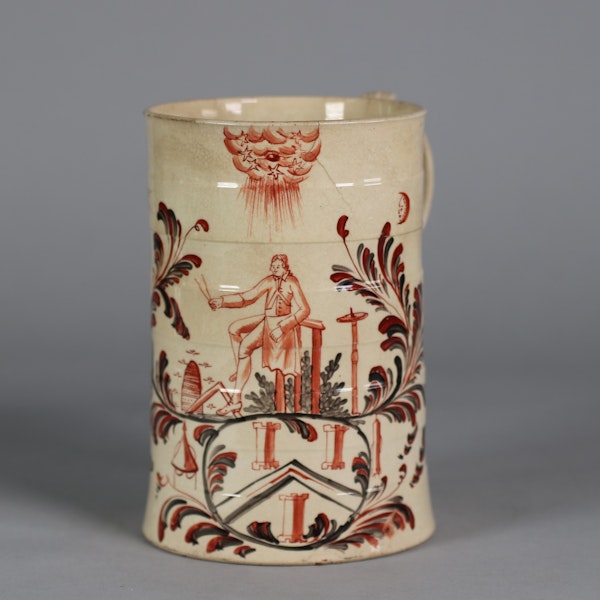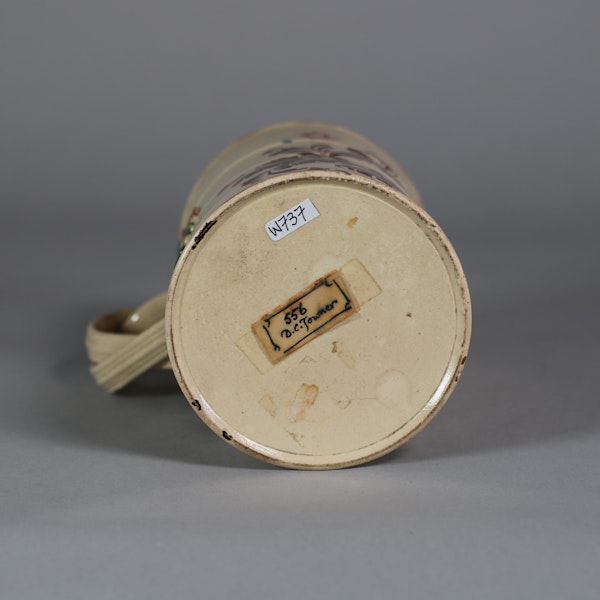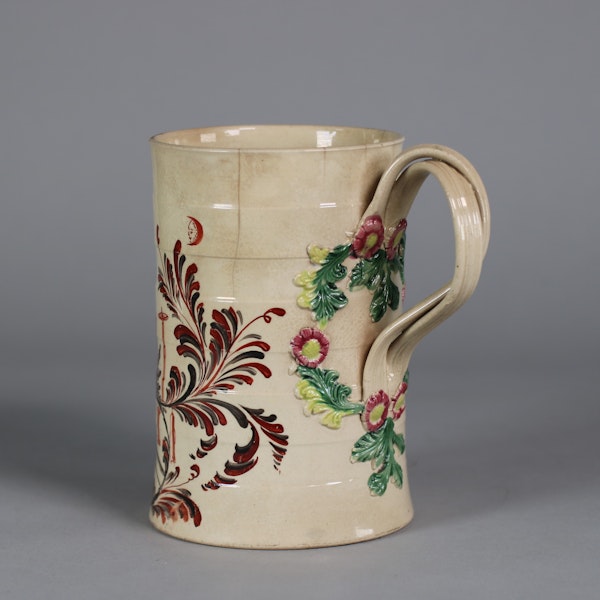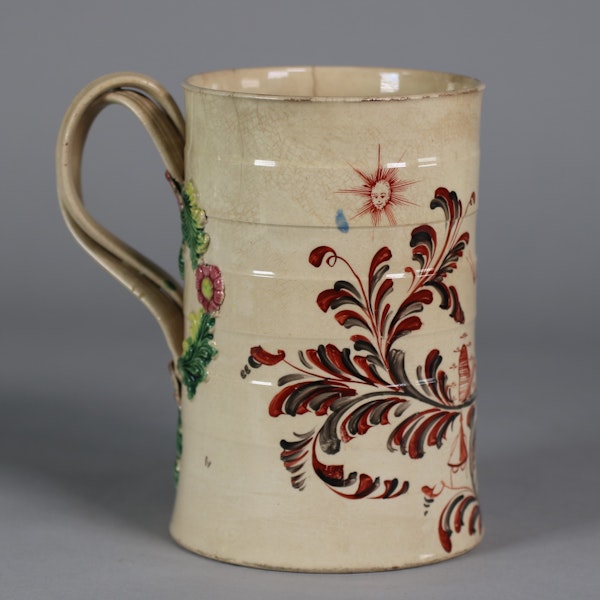Leeds creamware tankard c.1765
Leeds creamware tankard c.1765
POA
Description
Leeds creamware tankard c.1765, in fine earthenware with three horizontal straps to the belly and applied double-crossed strap handle with moulded flower decoration; painted in iron red and blue with foliate plumes and a variety of Masonic ritual insignia, including the all-seeing eye in a cloud with stars, the beehive, a man holding a set of compasses with a square around his neck; the blazing star and columns.
Dimensions:
Height: 12.9cm. (5 1/8in.)
Condition: Seven vertical hairlines from the rim; small loss to flowers at base of handle
Notes:
Creamware is a type of earthenware pottery developed in Staffordshire in the mid-18th century by potters who were looking to create a ceramic more refined and lightweight than saltglazed wares yet more durable and inexpensive than soft-paste porcelain. The refined body and characteristic pale cream colour is the result of combining white clay with calcined flint before firing at around 800 degrees and applying a lead-based glaze. By the 1760s Leeds had emerged as a leading centre for the production of creamware and as the main competitor to Thomas Wedgwood. Concurrent with the rise of creamware, Freemasonry became highly fashionable in England during this period, with new membership largely drawn from wealthy and educated classes. As these families were also key consumers of creamware, which though more affordable than Chinese porcelain remained a luxury item, there are many examples of creamware with Masonic designs that incorporate the various insignia of the fraternity.
| item details | |
|---|---|
| Material and Technique | Creamware with enamel decoration |
| Origin | British |
| Period | 18th Century |
| Condition | Good |
| Dimensions | Height: 12.9cm. (5 1/8in.) |
Product REF: W737








